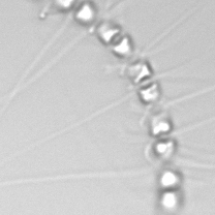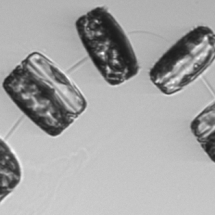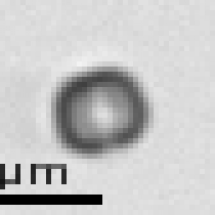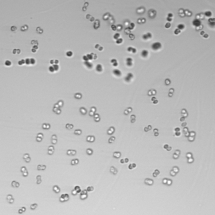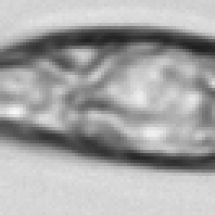Rescue in Baffin Bay
It was June 23rd, day of the crew change, near Qikiqtarjuaq. We had a partially clear sky, just long enough to complete all the helicopter flights for cargo transportation, ice camp assistance and scientific team minor changes.
Waiting for the Imaging FlowCytobot
Amongst cargo getting on the ship was the instrument I was waiting for since the beginning of the cruise. This instrument, the Imaging FlowCytobot (IFCB), is a submersible imaging flow cytometer taking pictures of phytoplankton. Long-time friend of R2D2, Takuvik’s IFCB running at the ice camp, Sea-3PO (thanks to Lee Karp-Boss!) is our mate here on board of CCGS Amundsen. However, after installation of Sea-3PO in a custom-made shock-absorbing casing, we (Claudie and I) ran a few tests to verify that everything was working fine. Unfortunately, this wasn’t the case: we had a totally black screen. Even though it is said that opening and IFCB is the last thing you want to do, we had to do it.
But the happiness was short-lived
What a surprise when we found ~50mL of bleach at the bottom of the IFCB housing. One might say: “Oh the IFCB might have been very clean!” For that purpose I have to admit it, it was. However, electronics tend not to be so good friends with bleach. Over a few days, with the help of Marc and José, we proceeded to the cleaning of the whole IFCB, removing corrosion, bleach, checking connections, etc. Final verdict: it is still not working. The flash lamp was totally corroded (that explained the black pictures!) and one of the housekeeping boards, which controlled essential parts of the IFCB, was broken as well. Claudie, with many hours of experience in IFCB repair, did an amazing job repairing the flash lamp. After many emails and with help from people at the University of Maine and from McLane (manufacturer), we decided to change the housekeeping board. Then was the moment of truth. After this rough operation, of at least one hour with its body completely opened, would Sea-3PO come back to life?
YES it did!
The first phytoplankton images
One week after boarding CCGS Amundsen, Sea-3PO was finally delivering its first phytoplankton images, just in time for THE bloom, i.e. very high chlorophyll-a fluorescence values (proxy to estimate phytoplankton biomass). We found the bloom we were looking for, but not exactly what we expected. To our astonishment, it was a Phaeocystis sp. bloom, surprising everyone, even the chief scientist! Phaeocystis sp. blooms have been reported in the Labrador Sea for instance, but this was unexpected and exciting at 70˚N in Baffin Bay!
As of now, Sea-3PO has gone over its 200th sample, with a total of more than 160 000 pictures! Its duty will be over in a week, after we have completed the last and 7th transect in Baffin Bay. Final word from Sea-3PO: “Mission accomplished.”
